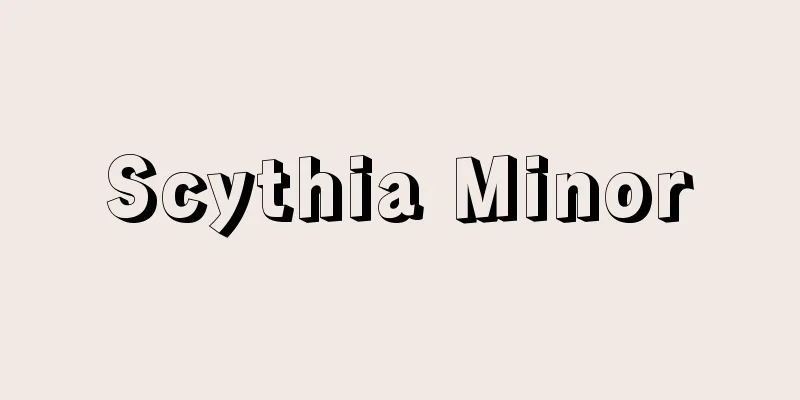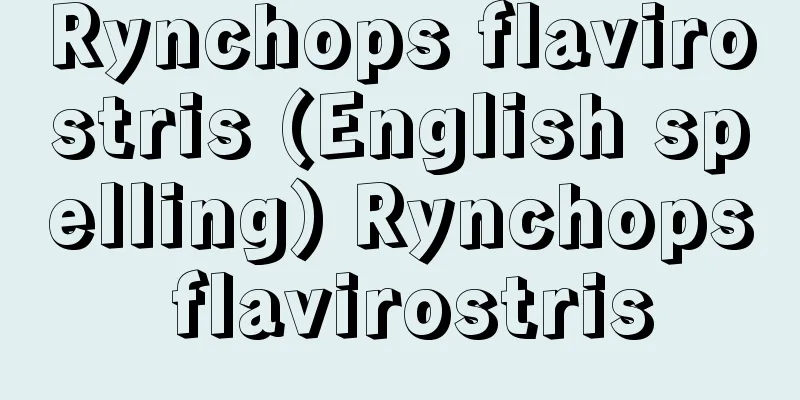Carolingian Art

|
This refers to the art style of the West Frankish Kingdom from the end of the 8th century to the first half of the 10th century. Its scope extends to present-day Germany and France, and in French it is also called the Charlemagne style. It was brought about by the conscious efforts of Emperor Charles (Charlemagne) the Great (reigned 768-814), who dreamed of a revival of the Roman Empire, and is significant and distinctive in that it absorbed and fused ancient culture and Christianity into the soil of both Germanic and Celtic peoples, making it the origin of European art. In addition, in the plastic arts, a love of the Byzantine style in late antiquity is a characteristic feature. In architecture, this was the first revival of large stone buildings north of the Alps, and it directly adopted Roman influences, and this tentative assimilation gave rise to new interpretations. For example, the Aachen Palace Chapel (792-800) has a large dome on an octagonal plan modeled after the Basilica of San Vitale in Ravenna. The close mass relationships in the horizontal section show the effort to centralize the architecture, which is a new interpretation of Roman architecture, and at the same time gave rise to new ideas such as the "Westwerk" (west structure), which was moved to the main building as a unique structure. This "west structure", which encouraged the later creation of twin-tower facades, was also installed in the Centura, the largest basilica of the Carolingian dynasty (the Abbey of Saint-Riquier near Abeville in northern France), as confirmed by surviving drawings and plans. A slight remnant of this style remains in the Abbey of Colwei (855-873) in northwestern Germany. The interiors of these churches are said to have contained murals and mosaics depicting both religious and secular life, but little remains today. In sculpture and painting, minor arts such as goldsmithing, ivory work, and illuminated manuscripts are known. In goldsmithing, the covers of the Codex aureus (c. 870, Bavarian National Library) and the Lindau Gospels (c. 870, Pierpont Morgan Library, New York) are good examples. The colorful gemstones scattered on them are not directly set into the gold relief, but are set away from the gold surface by delicate bases, suggesting the consideration to make the gemstones look more beautiful by reflecting light and the high level of technology that made this possible. Ivory work is also often used for the exterior of the gospels. For example, Christ Victorious (c. 875) in the Royal Museum of History of Brussels in Belgium depicts a regal figure of Christ, conveying the feelings of the Germans who first saw Christ as a miracle worker rather than a savior. Famous illuminated manuscripts include the Gospels of Charlemagne (c. 800-810, Kunsthistorisches Museum, Vienna), the Gospels of Ebon (c. 816-835, Epernay City Library, France), and the Psalter of Utrecht (c. 820-830, Utrecht University Library). These manuscripts belonged to various schools, including those in St. Gallen, Tours, Laim, and Metz, except for those directly under the control of Charles the Great's court. [Taro Nomura] Source: Shogakukan Encyclopedia Nipponica About Encyclopedia Nipponica Information | Legend |
|
8世紀末から10世紀前半に至る西フランク王国の美術様式をさす。その範囲は現在のドイツ、フランスに及び、フランス語ではこれをシャルルマーニュ様式ともいう。ローマ帝国の復活を夢みるカール(シャルルマーニュ)大帝(在位768~814)の意識的な努力によって招来されたもので、ゲルマン、ケルト両民族の土壌に古代文化とキリスト教とを摂取、融合した点に意義と特色があり、ヨーロッパ芸術の始原をなしている。また、造形芸術では古代末期、ビザンティン様式への愛好が特徴的である。 建築では、アルプス以北での石による大建築の最初の復興で、ローマの影響を直接に取り入れ、その手探りの摂取が新たな解釈を生んでいる。たとえばアーヘンの宮殿礼拝堂(792~800)は、ラベンナのサン・ビターレ聖堂を模した八角堂のプランに大円蓋(だいえんがい)を設けているが、水平断面における緊密な量塊関係が示す集中建築への努力は、ローマ建築への新解釈であると同時に、独自の建造体として本陣に移された「ウェストウェルク」Westwerk(西構え)のような新機軸を生んでいる。後世双塔形式のファサードの成立を促すこの「西構え」は、カロリング朝最大のバジリカ式教会堂ケントゥーラ(北フランス、アベウィル近郊のサン・リキエ修道院聖堂)にも設けられていたことが今日残る素描や設計図で確認されている。北西ドイツのコルワイ修道院聖堂(855~873)にはわずかにそのおもかげが残っている。これら教会堂の内部には、宗教と世俗生活をモチーフとした壁画、モザイクがあったとされるが、今日ではほとんど残存していない。 彫刻と絵画では、金細工、象牙(ぞうげ)細工、彩飾写本のような小芸術が知られている。金細工では『コーデックス・アウレウス』Codex aureus(870ころ・バイエルン国立図書館)、『リンダウの福音(ふくいん)書』(870ころ・ニューヨーク、ピアポント・モルガン図書館)などの表紙装丁が好作例である。そこにちりばめられてある多彩な宝石は、金のレリーフ面に直接はめ込まれたものではなく、繊細な台脚によって黄金面から離されて細工されており、宝石を光の反射でより美しく見せる配慮と、これを可能にした技術の高さがしのばれる。象牙細工もまた福音書の外装に使われている例が多く、たとえば、ベルギーのブリュッセル王立歴史美術館蔵の『勝利のキリスト』(875ころ)は、王者の風格をもつキリスト像が表現され、キリストを救済者としてよりは奇跡の執行者としてまず受け止めたゲルマンの心情を伝えている。彩飾写本では、『カール大帝の福音書』(800~810ころ・ウィーン美術史博物館)、『エボンの福音書』(816~835・フランス、エペルネ市立図書館)、『ユトレヒトの詩編』(820~830ころ・ユトレヒト大学図書館)が名高い。これら写本の流派は、カール王宮直属のものを除いて大修道院に所属し、ザンクト・ガレン、トゥール、ライム、メッツなど各派があった。 [野村太郎] 出典 小学館 日本大百科全書(ニッポニカ)日本大百科全書(ニッポニカ)について 情報 | 凡例 |
<<: Carolingian Renaissance (English)
>>: Carolingian dynasty (English spelling) Carolingiens French
Recommend
Actinium emanation
…A gaseous radioactive nuclide belonging to the a...
Austric
...This family was established in a series of pap...
Artistic anatomy - Bijutsukaibougaku (English) art anatomy
This is the field of human and animal anatomy that...
Kyoka Wakabashu - Kyoka Wakabashu
A collection of kyoka from the late Edo period. Wr...
Auger Electron - Auger Electron
Auger electron : The outermost electron ejected by...
Dutch Trading Post Diary - Holland Trading Post Diary
These are official diaries written by successive ...
Lady Wei (English spelling)
A calligrapher from the Jin Dynasty in China. Her ...
Korea Development Bank
...The main taxes are income tax, corporate tax, ...
Ergosterol
…Cholesterol is almost nonexistent in plants, and...
Tamausagi - Tamausagi
[1] 〘Noun〙① A rabbit believed to live on the moon....
Teotihuacan culture
Teotihuacan means "city of gods" or &quo...
darwish (English spelling)
...an Islamic mystical monk who belongs to a tari...
ataraxia
… “As long as we exist, death does not exist, and...
Edo aburazame - Edo aburazame
A general name for a genus of the family Heptranc...
Hirofumi Omatsu - Hirofumi Omatsu
Coach of the Japan Women's Volleyball Team. Bo...









